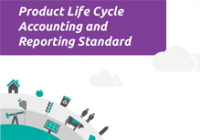Standards & Guidance
The India GHG Program is based on the GHG Protocol. The GHG protocol followed a broad, inclusive and multi-stakeholder process engaging participation from businesses, government agencies, and non-government organizations to develop an internationally accepted greenhouse gas (GHG) accounting and reporting standards and tools in order to achieve a low emissions economy worldwide.
The GHG Protocol consists of four separate but linked standards:
-
 January 03, 2014
January 03, 2014The GHG Protocol for Project Accounting (Project Protocol) provides specific principles, concepts, and methods for quantifying and reporting GHG reductions—i.e., the decreases in GHG emissions, or increases in removals and/or storage—from climate change mitigation projects (GHG projects). The... Read More
-
 January 03, 2014
January 03, 2014The GHG Protocol Product Life Cycle Accounting and Reporting Standard (referred to as the Product Standard) provides requirements and guidance for companies and other organizations to quantify and publicly report an inventory of GHG emissions and removals associated with a specific product. The... Read More
-
 January 03, 2014
January 03, 2014Scope 3 emissions can represent the largest source of emissions for companies and present the most significant opportunities to influence GHG reductions and achieve a variety of GHG-related business objectives. Developing a full corporate GHG emissions inventory – incorporating scope 1, scope 2... Read More
-
 January 03, 2014
January 03, 2014The GHG Protocol Corporate Standard provides standards and guidance for companies and other types of organizations preparing a GHG emissions inventory. It covers the accounting and reporting of the six greenhouse gases covered by the Kyoto Protocol—carbon dioxide (CO2), methane (CH... Read More
